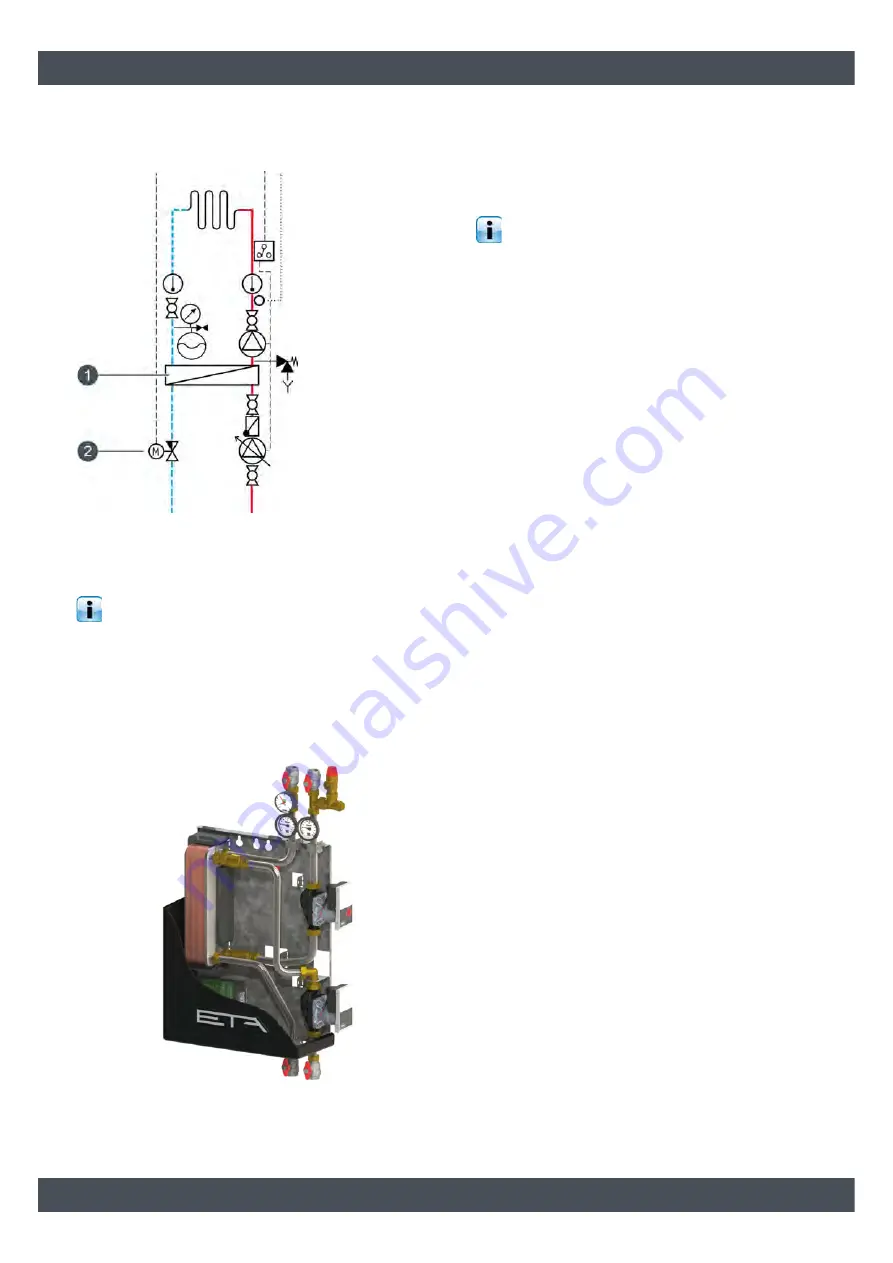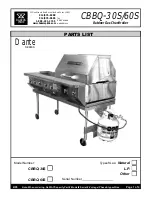
Information for installation
Pressure equalisation
25
recommended here. If damage to the boiler caused by
the introduction of oxygen is proven, all claims under
warranty and guarantee are void.
Fig. 7-6: System separation
1
Heat exchanger
2
Control valve
The hydraulically correct incorporation of the heat
transfer station (regardless of whether for system
separation or as a transfer station) must be adjusted
on the primary side. In order to achieve optimal flow
based on the flow temperature, the use of a two-way
control valve (see graphic above) is recommended.
Additionally, the primary pump should be designed
with differential pressure control. A system separation
module with these specifications is available from ETA.
Fig. 7-7: ETA system separation module
No open expansion tanks
Open expansion tanks improperly allow air into the
system. Existing systems with open expansion tanks
must be redesigned or physically separated from the
boiler.
Pressureless buffer storage may not be attached
directly to the boiler. If it is not possible to replace
this buffer, there must be a physical separation
between the boiler and the pressureless buffer.
7.6
Pressure equalisation
Sufficiently large expansion tank
To protect against air suction if the system cools off, a
specialist must design a sufficiently large expansion
tank. The 18-litre expansion tank built into the boiler is
sufficient for typical underfloor or radiator systems. If
there is a buffer storage tank, an additional expansion
tank will be needed.
Sufficient air venting must also be ensured. Open
expansion tanks or underfloor heating with permeable
piping also have a high air intake, resulting in above-
average boiler corrosion. Corrosion damage to the
boiler due to insufficient air venting or high air intake is
excluded from warranty, guarantee and liability.
An expansion tank is needed
To equalise pressure in the system, a diaphragm
expansion tank with a gross capacity of around 10% of
the system volume is required. If the pressure
difference between cold and warm heating system
(buffer fully loaded if installed) is greater than 1.0 bar
for a single-storey system or 0.5 bar for a three-storey
system, then the expansion tank is too small and
absolutely must be replaced with a larger one. If the
installed expansion tank is not large enough, the
system sucks in air when cooling and the air is
absorbed by the cold water and transported to the
boiler. At the point of highest temperature, the air
separates from the water again. This usually takes
place in the boiler, and the inevitable result is that the
boiler wall will rust through in these spots.
Adjust expansion tank pressure
Most expansion tanks are delivered with primary
pressure of 1,5 bar. Adjust the pressure by releasing
nitrogen so that it is 0.3 bar higher than the static
pressure at the installation location, but make sure the
pressure does not fall below 0.9 bar.
•
Example 1:
height difference between expansion tank and
highest point in the system pst = 11 m = 1.1 bar:
1.1 bar + 0.3 bar = 1.4 bar pressure setting.
Summary of Contents for PelletsCompact
Page 1: ...2020 07 21 EN 0000000061 V 022 1513 93003 003 PelletsUnit 7 15 kW Installation ...
Page 41: ...Installation Network connection 41 ...
Page 45: ...Electrical connections Overview of circuit boards 45 ...
Page 49: ...Electrical connections PE C4 circuit board 49 ...
Page 66: ...www eta co at ...
Page 67: ......
Page 68: ...www eta co at www eta co at downloads DOWNLOAD ...
















































